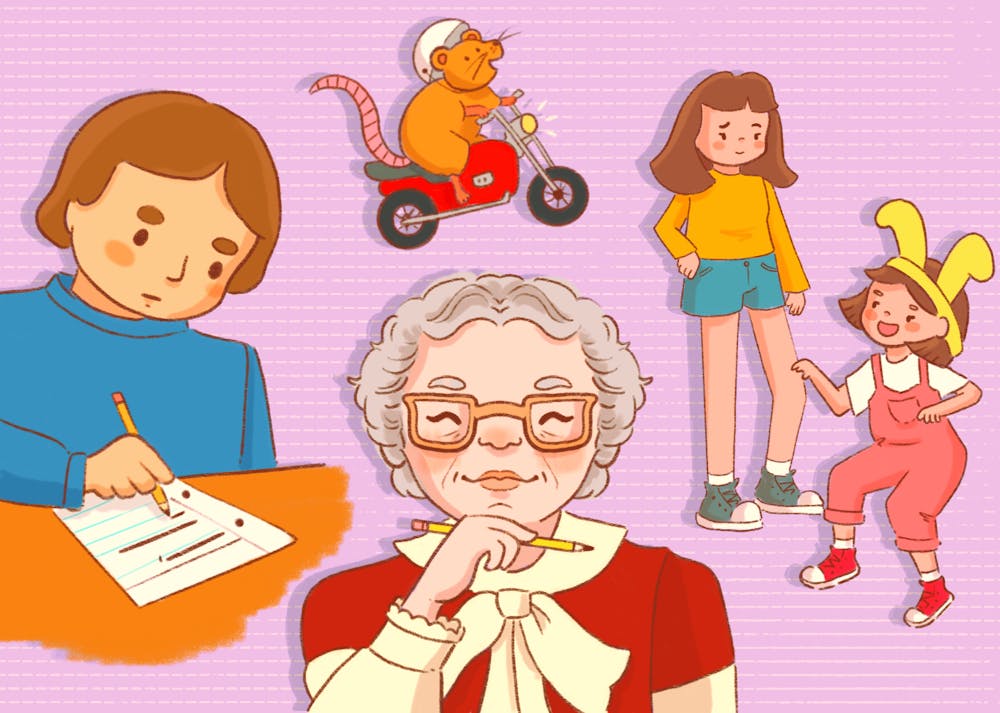Beverly Cleary is an author nearly everyone can recognize.
Whether it be from reading "Dear Mr. Henshaw" in grade school English class or diving into the next book in Ramona Quimby series, Cleary's work has played a substantial role in the childhoods of many — mine included.
It's been years since I've read her stories, but my heart still felt heavy when I heard the news that the renowned author died at 104 years old on March 25. I hadn't thought about Cleary since I was a kid, so this reminder of her and her legacy, albeit solemn, led me down a nostalgic rabbit hole — one that made me realize how remarkable Cleary's impact was on young readers like me.
What made Cleary's work different from other children's authors was her ability to add emotional realism into her stories. Despite catering to a young audience, she wasn't afraid to speak about divorce, family dynamics, financial problems and other topical life issues whereas other stories concerned themselves with fighting dragons, dueling wizards or saving the world.
Some other children's books focused on simplistic narratives that led to a quick, happy resolution, but Cleary resolved to create plots that children could identify with on days both good and bad.
For me, the introduction to realism through her characters experiencing everyday trials and tribulations helped shape my young insight. I was reading about real situations of middle-class families and how they would work out issues, and through this I was able to gain valuable knowledge of what I should expect and do in my own life.
While all of Cleary's characters hold a special place in my heart, Ramona Quimby will forever be a cut above the rest.
Her fierce desire to discover the world and experience life to the fullest inspired me to do the same. Ramona's inquisitive nature matched my younger self in many ways. Both of us were constantly curious to know more, and Cleary's character comforted me in my intrigue with the world.
While others may have been exasperated by my inquisitions, Ramona was by my side in exploring the corners of the universe.
Reading Cleary's books subconsciously kickstarted my belief that girls can never be "too much" in their excitement, emotions and curiosity. While other social norms pushed prim and proper, Ramona Quimby joined the ranks of powerful girls and women who did what they wanted, when they wanted.
Beyond Cleary's characterizations, the relationships and dynamics found in the Ramona Quimby series are what truly make her stories special to me. The dynamic between Ramona and Beatrice "Beezus" Quimby resonates with so many. The characters represent undying sisterly love despite temporary annoyances, setting the foundation for real-life sibling bonds.
The sisters' dynamic conjures the "grass is always greener" trope with many of their arguments branching from comparison and family struggles. While Ramona feels trapped in her older sister's shadow, Beatrice feels frustrated by her younger sister's incessant energy. Both of them think the other has it better, when the reality is their problems are only perpetuated by the rifts in their relationship.
As an older sister, Beatrice's frustrations were not much different from my own. With the responsibility of being the eldest, I felt I had to help my sister out in every way possible — when she didn't cooperate, I felt defeated.
However, in the same way Ramona defined herself as her own person, I realized my sister was far more capable than I knew.
Yes, I have experienced the world longer than her, but she experiences it in her own way. My attempt to teach her through my lens was futile. The Ramona-esque quirks my sister possessed may have been frustrating at the time, but now I look at them with admiration and love.
Through Cleary's stories, I was taught it was OK that I wasn't always at my best. I was young, and I was bound to make mistakes. The world was still so new — I was still growing into it, not quite aware of who I was.
However, I knew I deserved a spot at the table, and if that made me a pest in the eyes of some, so be it.
Thank you, Beverly Cleary, for showing me what sisterly love looks like and that inquisitive girls have a place in this world, too.
Reach the reporter at jecote@asu.edu and follow @jillianecote on Twitter.
Like The State Press on Facebook and follow @statepress on Twitter.
Continue supporting student journalism and donate to The State Press today.




